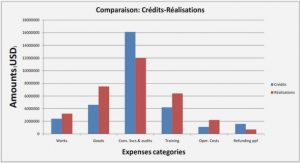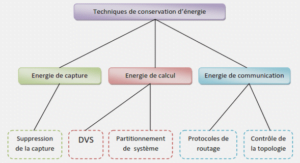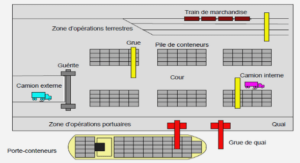Circulation and ecological models
The 3-D sea ice-ocean model driving the C. finmarchicus life cycle model was detailed in Saucier et al. (2003, 2004) and Smith et al. (2006b). This physical model represents the current sea-ice and ocean components of the Canadian Operational Weather Forecast model GEM (Pellerin et aL, 2003), and the Canadian Regional Climate Model (Faucher et aL, 2004). The physical model is based on shallow water and hydrostatic approximations. The coastal ocean model is coupled to a multi-category dynamic sea ice model and a two-Iayer plus one snow layer thermodynamics. The model domain covers the estuary and the Gulf of St. Lawrence, from the inland limits of the upper estuary near Québec City (Ile d’Orléans), to the open boundaries delimited by the Strait of Belle-Isle and Cabot Strait . The grid resolution is 5 km on the horizontal (approximately half the local Rossby radius of deformation) and 5 m in the vertical, with the free surface and the bottom layers adjusted respectively to the sea level and the local topography. The model was forced by 3-hourly atmospheric fields provided by the Canadian Operational Weather Forecast Model, daily run-off data of 28 major tributaries, a monthly reanalysis of Bourgault and Koutitonsky (1999) for the St. Lawrence River run-off, and hourly water level (27 co-oscillating tidal constituents) and monthly temperature and salinity profiles prescribed at Cabot Strait and the Strait of Belle-Isle. The forcing fields were interpolated at the time resolution (5 min) of the model. The model computed fully prognostic solutions for water levels, currents, temperature, salinity, turbulent kinetic energy and sea-ice properties. Comparisons of the model outputs to recent and historical observations have shown that the model reproduced the high frequency to inter-annual variability in the circulation, water masses properties and sea-ice conditions of the GSL under the given realistic hydrological and atmospheric forcing (Saucier et al., 2003; Smith et al., 2006b).
Vertical migrations
Ontogenetie vertical migrations assoeiated to the diapause process and daily vertical migrations during development in late copepodite stages are generally observed in C. finmarchicus (e.g. Simard et al., 1985). Data collected in spring and early fall 1998 in the north-west GSL showed DVM behavior in sorne of the copepodite stages . In spring, most of C5 were probably still in diapause , while in fall their bimodal distribution at night combined to the depth of the deep compone nt suggest DVM for actively growing C5 within the 0-100m layer, and diapause for the others between 125-150 m . Diapausing individuals were also likely to be responsible of the bimodal night-time vertical distribution of C4 in spring . A weak DVM behavior was present in Cl-3 , whereas C6f showed clear DVM during both periods . The GSL environment is characterized by marked heterogeneities, such as the topographic discontinuity formed by the deep channels, the vertically sheared estuarine circulation, the stratification of the water column with the presence of a co Id intermediate layer, etc (Koutitonsky and Budgen, 1991). When considering the population dynamics of C. finmarchicus in the GSL, vertical migrations are likely to interact strongly with those physical features. Our study considered two scenarios of swimming behavior according to the seasonal observations of the vertical distribution and migration of the C. finmarchicus copepodite stages described above.
The first scenario (no-DVM) took only into account ontogenetic migration associated with the entry and the exit from diapause with aH stages ascribed to a fixed preferential depth . Diapausing C5d were centered at 175 m, while C6f and aH other active stages remained near the surface. The second scenario (DVM) allowed DVM between surface and 100 min copepodite stages C4, active CS and C6f. Males stayed at 75 m in both scenarios. In both cases, egg sinking was considered (Knutsen et al., 2001), and egg reaching the bottom before hatching were considered lost from the population. The swimming behavior was formulated following Zakardjian et al. (1999). Stage-specifie swimming speed was defined as the product of a maximum swimming velocity, a depth dependent hyperbolic tangent function, leading to downward (respectively upward) swimming when copepods are ab ove (respectively below) their stage-specifie convergence depth. Ontogenetic migrations corresponded to a constant convergence depth, while time-varying stage-specifie convergence depths allowed to simulate DVM.
Comparison of observed and simulated patterns: the influence of circulation
Data from the four monitoring stations located along the main west-to-east surface circulation axis in the GSL system provided information on the temporal trends, and the abundance patterns of the copepodite stages of C. finmarchicus within this advective area. We present the results for the CS stage, which complete the life-cycle of the population through the dia pause process in the deep layer, and C6f which produce the second generation of the population within the productive surface layer. Both the I-D and 3-D simulations of each scenario are presented. The abundance of the total CS (active and diapausing components) simulated within the I-D framework were similar between both the no-DVM and DVM scenarios. Simulated abundances generally increased from station 1 to station 4, because of a lower cumulative mortality of C. finmarchicus stages driven by shorter development in response to positive gradient in temperature. I-D simulations overestimated observations In each station except at station 1, which is characterized by a short period of sampling and a sharp increase in abundance of CS in late summer .
Observed abundances of CS at each station showed a typical seasonal pattern with high abundances in winter in the deep LC (St. 2), a minimum in the abundance of CS in May-June and the build-up of the diapausing CS stock in late summer-early autumn (Runge and de Lafontaine, 1996; Plourde et al., 2001; Zakardjian et al., 2003). The observed differences between the stations are weIl reproduced by the 3-D simulations, which took into account the impacts of the circulation. It shows a lower abundance of CS at the coastal station 3 in late winter and late autumn (in diapause in the model) , and the late appearance of CS in early summer at the shallow station 4. Simulated abundances of CS were lower in the 3-D than in the I-D simulations, and they were generally underestimated relative to observation in the no-DVM scenario. The 3-D DVM scenario produced a better match with the observations. Comparing I-D and 3-D results, station 2 appeared to be the least affected by the hydrodynamics in the DVM scenario. On the contrary, the strong vertical shear in the estuarine circulation affected the abundance pattern of CS at station 1, where deep dwelling diapausing CS were advected upstream in winter, and surface-dwelling early stages were flushed downstream in summer.
DVM vs. no-DVM impacts on the simulated C. finmarchicus dynamics
For both migration scenarios the population was composed exclusively of diapausing CS d, located in the deepest parts of the GSL at the beginning of 1999. Differences among scenarios appeared in April with females and nauplii of the first generation. In the no-DVM scenario, C6f recently molted in
April and the first generation of nauplii. Both C6f and nauplii were mainly located over the west and central LC, but also deep within the Baie-des-Chaleurs and the Shediac Valley. They were less abundant in the LSLE and the eastern GSL, owing to the St Lawrence freshwater runoff and the inflow of Atlantic waters through Cabot Strait, respectively. The patchy distribution of these stages formed complex mesoscale structures. In June, the abundance of females was low and the population structure was dominated by nauplii and early copepodite stages. The production area was displaced south and east, and the resulting distributions over the Magdalene Shallows were more homogeneous in summer than in spring. High abundances of nauplii and early copepodites were found south of Cabot Strait. In the western GSL, high abundances remained within the Gaspé Current instabilities. In September, the production are a of the second generation moved further eastward . The highest abundances were found for an the stages within the Cabot Strait area, south-east off Anticosti Island and within the north-east GSL, while the lowest were in the LSLE and west GSL. The abundances of active CS and diapausing Csd increased while the abundances of the larval stages decreased. FinaIly, the last day of 1999 the Csd stock was formed within the deepest parts of the GSL. An eastward spatial gradient appeared, with abundance of CSd comparable to the initial conditions only east of Honguedo Strait.
For the DVM scenario, the distribution of C6f and nauplii in April corresponded weIl to the previous distribution of the Csd stock, which was constrained by the topography of the GSL . The abundance of C6f, and thus the abundance of the newly produced nauplii, were high in the north-west, and north-east GSL and in the central Le. However few females were found over the Magdalene Shallows . The low abundances along the eastern margin of the GSL resulted from the inflow of Atlantic waters through Cabot Strait, as in the no-DVM case.
Influence of the open boundaries
When the monthly climatology of C. finmarchicus abundance of St. 27 was imposed at the open boundaries, the amount of diapausing CS at the end of the simulated year is increased by 13.6% and 11% in the no-DVM and DVM scenario, respectively . The lower productivity of the no-DVM scenario explained this difference. In both scenario, the anomaly of abundance of C5d extended from the Cabot Strait area toward the north-east GSL, along the Newfoundland coast. The influence of inflows of Labrador Current waters through the Strait of Belle-Isle appeared limited compared to inflows of surface and deep Atlantic waters through Cabot Strait. A dense aggregation formed south-west off Newfoundland, owing ta the deep circulation patterns. The high abundance of C5d found in this area (> 104.m-2) corresponds to the concentration imposed at the Cabot Strait boundary in December . Hence the contribution of thesurface dwelling productive stages seems of little importance to the overall population dynamics of C. finmarchicus in the GSL.
|
Table des matières
CHAPITRE PREMIER :INTRODUCTION GÉNÉRALE
CHAPITRE II :IMPACTS OF THE INTERACTION BETWEEN THE HYDRODYNAMICS AND THE MIGRATION BEHAVIOR ON THE POPULATION DYNAMICS OF Calanus finmarchicus IN THE GULF OF ST. LAWRENCE, CANADA: A 3-D MODELING APPROACH
1 Résumé
2 Introduction
3 Material and Methods
3.1 Circulation and ecological models
3.2 C. f inmarchicus life history model
3.3 Vertical migrations
3.4 Validation
3.5 Models coupling, initial and boundary conditions
3.6 Empirical Orthogonal Functions analysis
4 Results
4.1 Environmental conditions
4.2 Comparison of observed and simulated patterns: the influence of circulation
4.3 DVM vs. no-DVM impacts on the sùnulated C. finmarchicus dynamics
4.4 Spatio-temporal scale ofvariability revealed by EOF analysis
4.5 Influence of the open boundaries
5 Discussion
5.1 Response to environmental variability
5.2 Diel vertical migrations
5.3 Influence of circulation regimes
6 Conclusion
CHAPITRE III :THE CONTROL OF DIAPAUSE BY THE LIPID METABOLISM IN Calanus finmarchicus : A POPULATION MODELTES
1 Résumé
2 Introduction
3 Materials and Methods
3.1 0-D base model design
3.2 I-D water column model
4 Results
4.1 0-D simulations
4.2 1-D simulations
5 Discussion
CHAPITRE IV : MORTALITY AND SURVIVAL IN EARLY STAGES CONTROL RECRUITMENT IN
Calanus finmarchicus
1 Résumé
2 Introduction
3 Methods
3.1 Field work, environmental variations and basic population parameters
3.2 Calculation of mortality rate, survival and daily recruitment
3.3 Condition of application of the VLT
3.4 Statistical analysis
3.5 Biological Inodel
4 Results
4.1 Seasonal climatology in the LSLE
4.2 Spatial pattern in the GSL in summer 2006
4.3 Relationship between PopEpr, recruitment rate and abundance of early stages
4.4 Relation between daily mortality and the environment
4.5 Impacts of mortality formulations on modeled population dynamics
5 Discussion
5.1 Comparison of mortality in early stages in the Gulf of St. Lawrence with other regions
5.2 Processes controlling mortality and survival
5.3 Processes controlling recruitment
5.4 Mortality estimates: limitations and assumptions
5.5 Mortality formulations and modeling population dynamics in Calanus finmarchicus
CHAPITRE V :CONCLUSION GÉNÉRALE
![]() Télécharger le rapport complet
Télécharger le rapport complet






